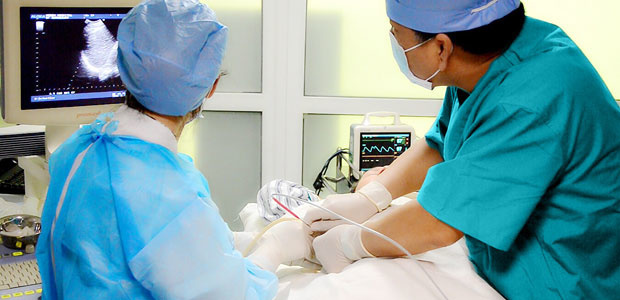According to statistics from the World Health Organization, in 2014, 2425 cases of ovarian cancer were newly emerged in the Philippines. As one of the most common malignant tumor among women, the incidence and mortality of ovarian cancer have been on the rise in recent years. Can ovarian cancer be treated? Minimally invasive therapy featuring few side effects, small trauma and quick recovery prevents ovarian cancer patients from suffering surgery and side effects of chemotherapy and radiotherapy as well as extend their survival time.
Ovarian cancer can be mainly divided into three types: Epithelial ovarian cancer(85%-90%), Ovarian germ cell tumors(<2%) and Ovarian stromal tumors,
1. Clinical stages of ovarian cancer
2. Tumor marker of ovarian cancer- CA125
Ovarian Cancer Stage I: 85%-90%;
Ovarian Cancer Stage II: 70%-73%;
Ovarian Cancer Stage III: 39%;
The staging of ovarian cancer is of great significance to the treatment plan and treatment effect. The extent, size and metastasis of the tumor affect the doctor's choice of treatment plan. The age, menopause and overall health status of the woman may have an impact on treatment options and prognosis.Treatment for Ovarian Cancer
Surgical resection: Big trauma and high risk; Along with the tumor, both ovaries, uterus, fallopian tubes and omentum will also be resected. If necessary, the cecum and surrounding lymphatic may also be removed. Especially in the case of advanced ovarian cancer, surgery is difficult to achieve the desired effect;
Radiotherapy and chemotherapy: Radiotherapy and chemotherapy are difficult to thoroughly remove cancer cells; cause toxic and side effects, such as hair loss, vomiting, etc. Chemotherapy kills both cancer cells and normal cells, cause damage to the immune system at the same time. 80% of patient may suffer relapse after receiving these therapies.
Minimally Invasive Therapy: 2-3mm incision, few side effects, little pain

Particle Implantation: Implanted particles will keep emitting y-ray within the tumor, targeting to the cancer cells accurately; the radiation of seeds to tumor last for 180 days, high accuracy, millimeter minimally invasive; few toxic side effects and complications.

Interventional therapy: with a 1-2 millimeter incision, anti-cancer drugs are directly given to the tumor, causing fewer side effects and drug concentration is 2-8 times higher than systemic chemotherapy, killing cancer cells more accurately.

Cryotherapy: compared with surgery, cryotherapy is associated with lower risks and less complications. little bleeding and quick recovery; few damage to normal tissues and can be performed repeatedly to prevent recurrence of lung cancer.

TCM & Western Medicine: Combination of traditional Chinese medicine and minimally invasive techniques can not only kill the cancer cells effectively, but also reduce toxic side effects, lower the rate of cancer recurrence, and greatly improve survival rate.
To know more about new technology for treating Ovarian Cancer
The Multidisciplinary Team (MDT) of St. Stamford Modern Cancer Hospital Guangzhou will make therapeutic plan for Ovarian Cancer patients based on their conditions.
• JCI International Medical Quality
Postoperative nursing for patients with ovarian cancer
Dietary principle for ovarian cancer patients
 viber
viber